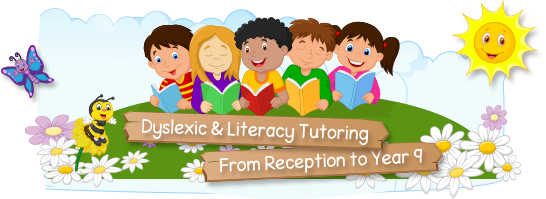Dyslexia Checklist for Children in Primary School
How to Tell if a Primary School Student may have Dyslexia

Endeavouring to identify if your child has Dyslexia can be a tricky process. Here’s some simple checks and information to start the process however we strongly suggest you seek a professional diagnosis and reports before any true determination can be applied.
Research indicates that approximately 10% of children have dyslexia. This means that there is likely to be at least one child in every class who displays the pattern of strengths and weaknesses characteristic of dyslexia. Do you have a young child who puzzles you, displaying well-developed skills and abilities in some areas and unexpected difficulties in others?
Complete this checklist to determine if that child could be at-risk of dyslexia.
Background
- family history of literacy learning problems
- seems bright and capable but not making expected progress
- may excel in drama, art, sport, technology, or computing
Reading Difficulties
- gets sounds in words muddled up (e.g., says flutterby for butterfly)
- trouble learning and remembering letter sounds
- difficulty catching on to phonics (letter-sound rules)
- hesitant and laboured reader, especially when reading aloud
- relies on a visual “look and say” approach to reading
- uses the context of the story and picture cues to identify words
- difficulty decoding unfamiliar words via letter-sound rules
- tends to confuse words that look alike (ie, was/saw, for/from, the/that, place/palace)
- misreads or omits small words (for, of, with, an, the) and word endings (-ing, -ed, -ly)
- is persistently confused by letters which look similar
- tends to lose his/her place when reading
Spelling and writing difficulties
- trouble getting thoughts down on paper
- poor standard of written work compared with oral ability
- limited spelling vocabulary – tendency to use only those words they know how to spell
- unusual spellings in which the target word is difficult to decipher (eg, traffic/tapt, adventure/aferch)
- upper primary students tend to spell words phonetically (ie, traffic/traffick, adventure/advencher)
- wrong choice of letters due to poor auditory discrimination, particularly between vowel sounds and some consonant sounds (eg, p/b, t/d)
- leaves letters out of words when spelling (eg, “moring” for “morning)
- mis-sequences the letters in words (eg, friend/freind)
- spells the same word in different ways without recognising the correct version (eg, spelling “said” as “sed”, “siad”, and “sede” within the same piece of work)
- inappropriate use of uppercase letters, usually because the child feels more secure with the capital form (eg, raBBit, Dog, etc)
- produces untidy work with many cross-outs and words tried several times
- difficulty reading back own written work
- difficulty copying accurately from the blackboard, particularly when under time pressure
- slow handwriting speed
- surprises you by the amount of effort put into their work and the little they have to show for it
Memory difficulties
- finds it hard to remember instructions
- overwhelmed by large amounts of verbal information
- trouble with long-term verbal learning (eg, memorising the months of the year, multiplication tables, etc)
- slow or poor recall of maths facts
Speech difficulties
Dyslexic children typically have well-developed oral language skills but display specific speech problems, such as:
- word-finding problems: has trouble finding the exact words wanted and so uses non-specific words (eg, thing, stuff, junk, etc)
- difficulty pronouncing multi-syllable sounds (eg, says “callapitter” for “caterpillar”)
- makes speech errors (eg, says “pacific” for “specific”)
- easily confused by tongue twisters (eg, She sells sea shells…)
- shows persistent articulation errors
- trouble with long-term verbal learning (eg, memorising the months of the year, multiplication tables, etc)
Additional Characteristics
- has difficulty with organisation (eg, story writing, books and belongings, homework)
- has obvious good and bad days with no apparent reason
Students with dyslexia may also display the following:
Attention problems
- has trouble sustaining attention on schoolwork
- tires easily because of the amount of concentration and effort required to cope
- requires assistance from teacher to complete tasks
Social/emotional/behavioural problems
- displays frustration
- employs work avoidance tactics such as sharpening pencils, looking for books or offering to “help”
- becomes withdrawn and isolated, sitting at the back and not participating
- acts as the class clown or is disruptive to mask difficulty coping with schoolwork
A student who appears bright and capable and displays many of these difficulties may have dyslexia. If you have concerns about a student who is not progressing as well as expected a good starting point is a comprehensive assessment with an educational psychologist. This will provide information about the student’s learning strengths and weaknesses and ascertain whether they have dyslexia. The earlier a student is diagnosed and remedial teaching begins, the better are the results that can be achieved.

